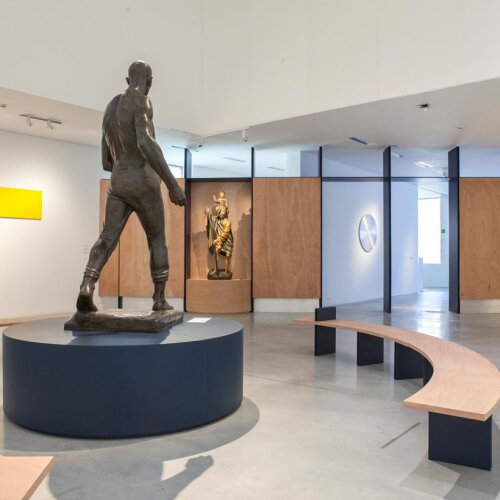Sustainable scenography: Applying circular principles to interior design of temporary exhibitions
Promotors: Nathalie Vallet, Hélène Verreyke
The museum sector aims to do its part in the face of climate change, and many museums show their willingness to become sustainable organisations through a number of actions, not least concerning material use and waste. However, these efforts are usually only experimental and are initiated bottom-up by exhibition designers and production teams. Therefore, it remains unclear what the actual impact is of these efforts. In this research, we analyse and assess the implementation of circular economy (CE) principles for interior design, specifically focused on temporary indoor scenography and exhibitions. Subsequently, we determine interior design indicators and guidelines, enabling museums, designers, and contractors to adapt and improve their existing operations. Preliminary research has put forward several key insights that underscore the need for further research. These insight concern, in short, miscommunication among actors; the lack of dedicated teams; and the knowledge gap regarding circular design principles (Lindenbergh, 2023).Circular Design is one of the approaches used to establish sustainable practices. However, the principles of circular design have not yet found their way to museum scenography and exhibitions. An added complexity when dealing with art works and cultural heritage objects are the standards for preventive conservation. As a consequence, CE principles that are implemented in the building industry, are not directly transferable to exhibition scenography, often due to preventive conservation restrictions. The proposed PhD trajectory elaborates the preliminary results by broadening the scope and by deepening the collection of high-quality data. Despite interesting bottom-up initiatives in Belgium and the Netherlands, there is a lack of attention for material waste caused by temporary exhibitions. There are no general criteria or guidelines on what is considered sustainable practice within the museum sector, which leads to different ideas on how to tackle sustainable scenography of the interior.

Modular system for the construction of temporary walls designed by the production team at M Leuven. (Source: Fischler)
Want to know more?
See Ilse's personal page for more information, contact links and publications!